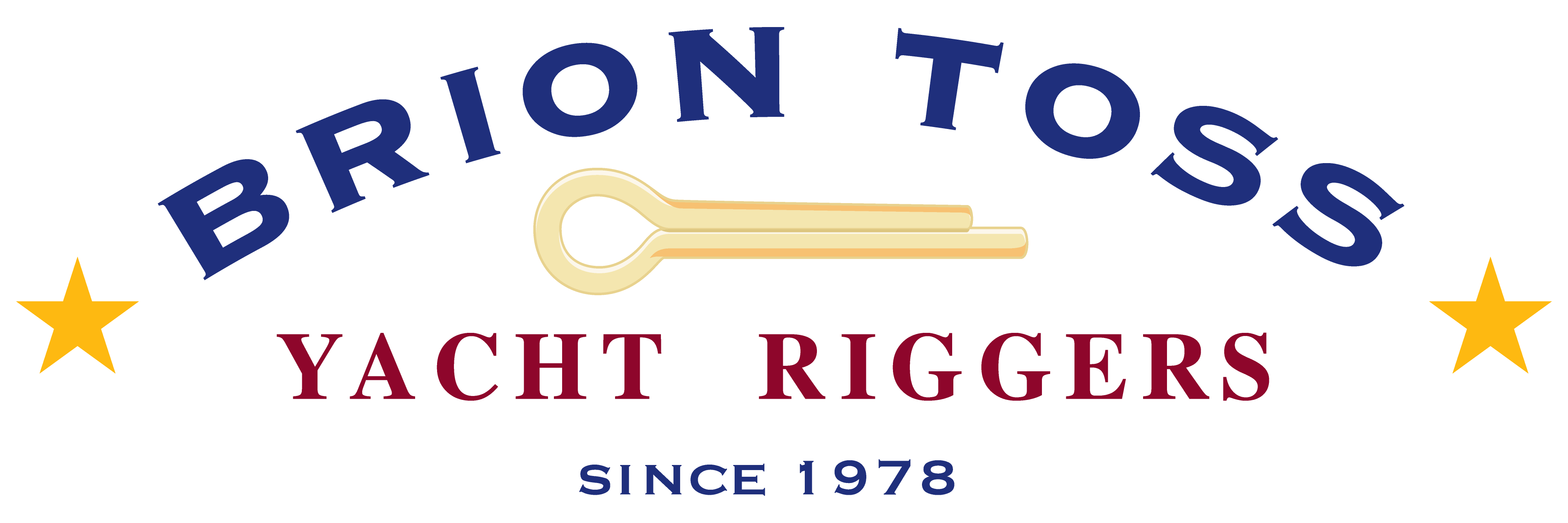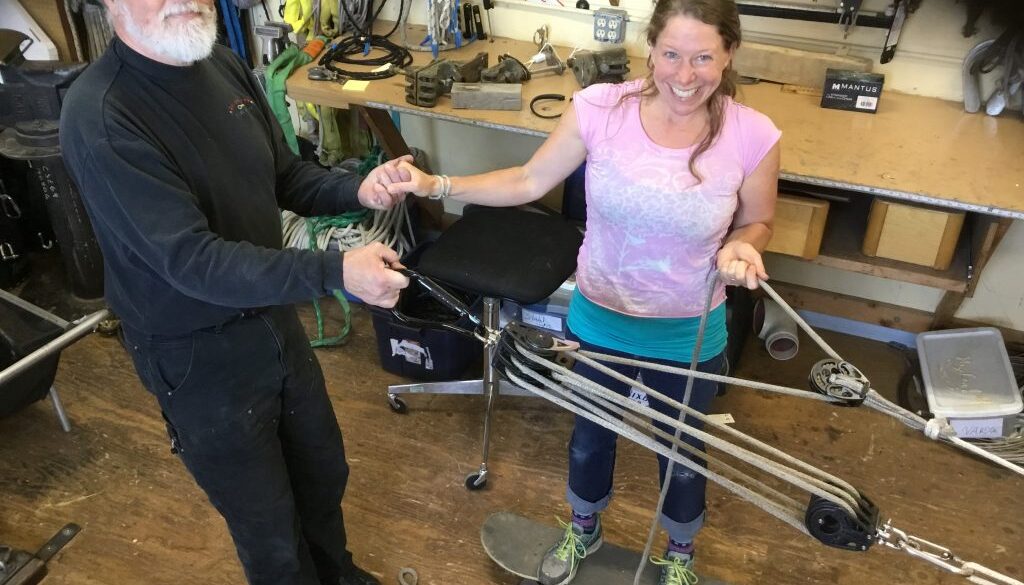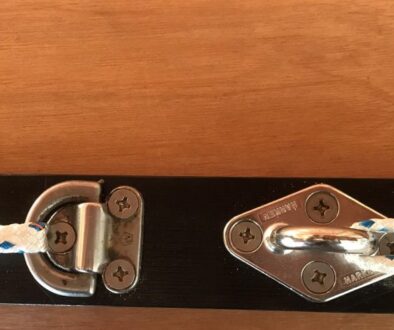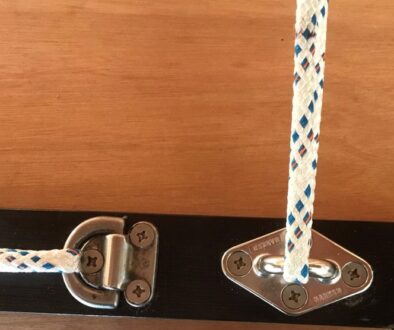Recirculating Purchase Puzzle: the Answer and the Winner
Hello all,
First I would like to congratulate everybody who wrote in with an answer. It takes courage to risk being wrong, which it turns out most entries were, with answers ranging from 0 to 56:1. This was a tough puzzle.
The primary purchase in the foreground is 7:1. We could determine this with a load cell, or by measuring how many feet of rope is pulled out in order to move the block at the load one foot, but the simplest method for a standard purchase is just to count the parts of rope coming out of the moving block. The trouble is, this is not a standard purchase; we need to go back to the logic underlying the convenient adage, which in part is that the load is suspended by a number of separate lines, with each line taking an equal share of the load.
As you can see, the block on the viewer’s left has three parts of rope on the near face, a deadend attached to a becket, and three more parts on Alison’s side, including the one that leads to the single block in the picture. Total of seven suspension points thus far.
That single block is a “redirect;” it is fixed in place, so it provides no additional mechanical advantage (the same is true for the triple block next to it). This redirect just brings the rope towards Alison, which is good, because now she is positioned to hang onto the fall of the purchase, as well as to me.
When you haul on a purchase that is not directly overhead, you have to be able to brace your feet on the ground, in order to provide an equal and opposite reaction to the horizontal component of your pull. But in our case the hauler is standing a skateboard, on a smooth surface; if Alison wasn’t holding onto me, she would just be drawn into the redirect by the load. By hanging onto me she avoids this, which limits how hard she can pull, but it is literally better than nothing, and gives the load another suspension point.
Let’s say that she can exert a fifty-pound pull (and anyone who has ever been hugged by her will tell you that this is well within her ability). By pulling with her left hand, she transmits all of her effort through her body to her right hand, which means that the primary purchase sees a fifty-pound load, times seven, and I feel that 7:1 load, plus an additional fifty-pound load from her right hand, for a total of 8:1, which is the answer.
If this makes your head hurt, you are in good company; some very knowledgeable riggers couldn’t work it out.
This configuration can have wonderful practical utility, in situations where it is feasible – and safe – to loop an arm around the load, or otherwise connect yourself to it. It is usually thus easy to leave both hands free, greatly increasing your hauling power, and your ability to hand-over-hand along the fall. Just resist the temptation to brace your feet on the ground.
I did not specify that entrants had to provide a correct explanation for their answers, only a correct advantage number. Some of you took, um, dubious routes to get to your answers, but I included you anyway if the result was 8:1.
With that said, the randomly-drawn winner from the pool of correct entries was … Savvas Eftychis! Congratulations! I am relieved to note that you did not offer a bogus explanation for your conclusion. Be in touch to tell me where to send your copy of the Rigger’s Apprentice.
Next week’s puzzle: Winch Winge
I also have a new article coming out on Friday. It is a true-life story from the late, great Robb White, involving a preacher, a lot of canned hams, a Seagull outboard motor, and a flaming lifeboat. It is one of the funniest things I have ever read, and I really need to share it. Subscribe below, and you will get notified by email when it – and anything else I post – comes out.
As always, I invite you to visit our Shop. And be sure to binge-read our cornucopia of previous Blog entries.
Fair leads,
Brion Toss



